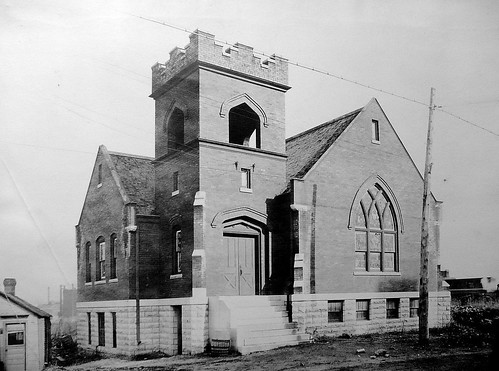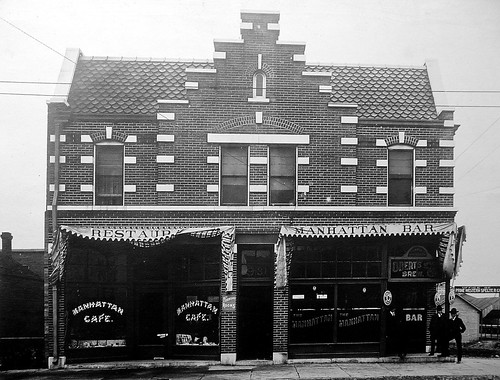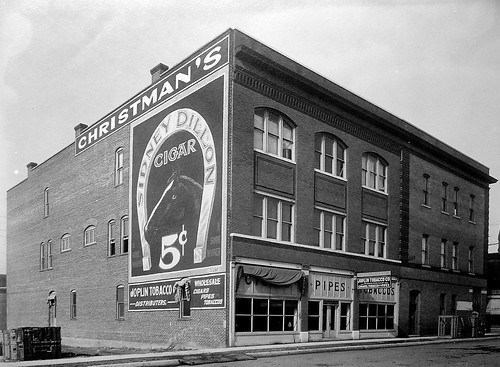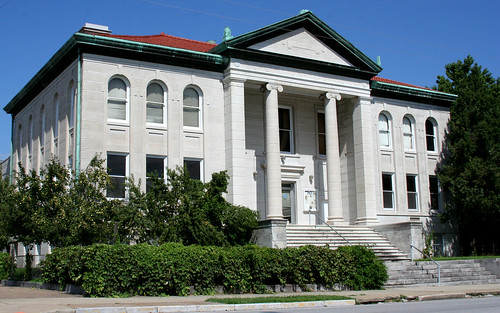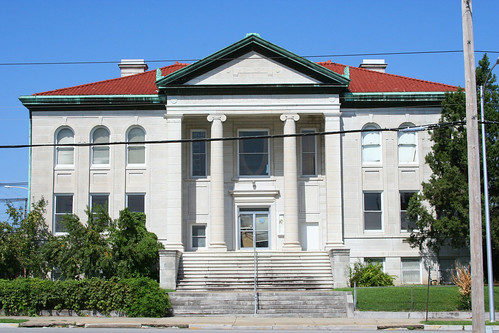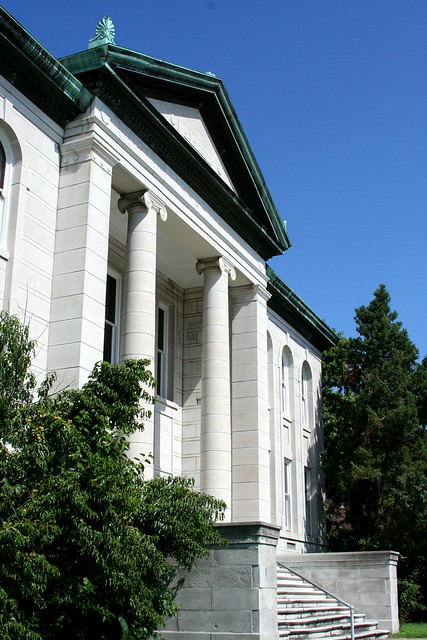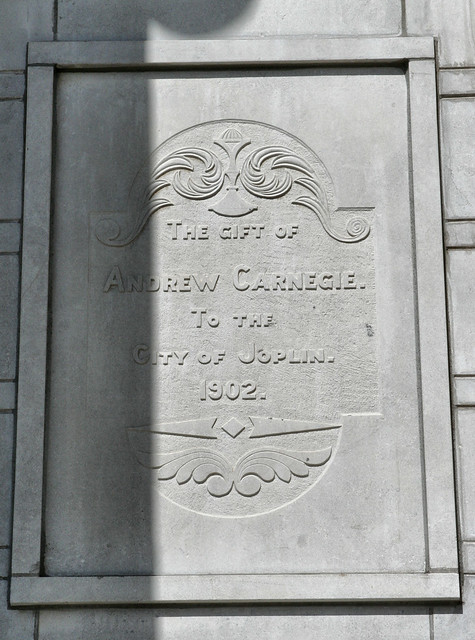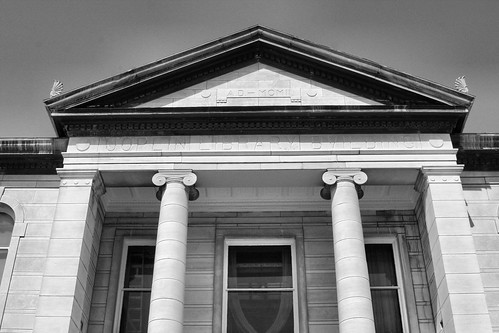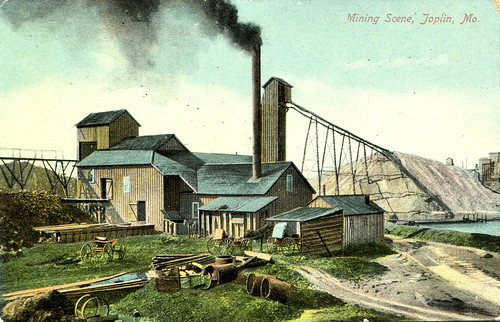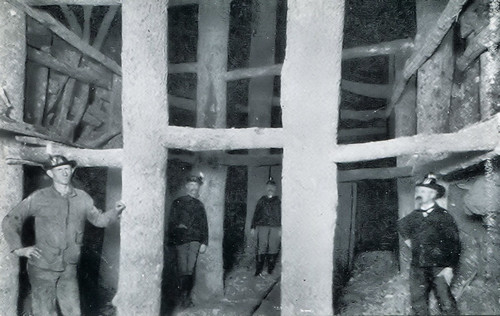As reported in the Joplin Globe today, the Joplin Museum Complex in Schifferdecker Park was visited yesterday by Mary Frances Turner, of Synergy Design Group (a museum design firm) and a museum expert. Ms. Turner was invited by Chad Greer, the architect hired by City Manager, Mark Rohr, to oversee the expected costs of restoring the Depot. The purpose of her visit was to evaluate the collection of the museum and to offer her analysis on whether the Union Depot would be a suitable home for the museum.
Of note is the fact that the museum houses an extensive photographic collection of early Joplin, not to mention an amazing mineral collection. The Globe quoted Ms. Turner as responding, “This is it,” Turner said of the photographs and other historical documents, some of them portraying life in the lead and zinc mines that underpin the founding of Joplin and much of the region. “This is a gold mine” for research, she said.”
Per the condition of the Depot, the matter of the standing water in the basement was raised as an issue toward the climate controlled nature that will be demanded of the new home for the museum. There was also the question of parking.
For those of us closely following the situation, we will have to wait another 4 to 6 weeks for Ms. Turner’s report.
Needless to say, here’s our rather passionate response!
The article also states,
“[Museum Director Brad] Belk has used the materials in some local history books he has written, but the public is largely unaware of the photographs because there is no space in the current setup for them to be accessed or viewed by visitors.
Belk and Shirley listed the mineral collection and mining machines, the local history exhibits and archives, an 8,000-item presidential collection, a collection of World War II-era uniforms, fashions and textiles, Civil War items, and dolls as among the collections that need display space. Some have never been viewed by the public.”
First, as we have repeatedly discussed in the past, Brad Belk has refused access to the photograph collection to visitors (including us). Will this really change if the museum relocates to a new building? If there is a new facility, will Belk finally allow the public to view and obtain copies of photographs, use them in books, or other publications?
To be honest, we’re skeptical. It appears as if he treats the collection as his own personal fiefdom. If Belk was smart, he would model the photograph collection like the one at the Shiloh Museum of Ozark History in Springdale, Arkansas, one of the finest small museums in nation.
If you want to see what the Joplin Museum Complex should be like, then visit the Shiloh Museum. It has the largest photograph collection in the state of Arkansas that is lovingly and professionally cared for by trained, expert staff. The museum features an art collection (artwork is frequently rotated on a regular basis), permanent exhibits about life in the Ozarks, rotating exhibits on topics of local, regional, and national interest, a superb museum collection, and outdoor exhibits. Its staff have years of museum and public history experience with actual degrees and training in the museum field. Its director is very active (committee and board member) in the American Association of Museums (AAM) the lead organization in the field. Supported by the city of Springdale, Arkansas, and private donors, it operates on a small budget every year, less than $500,000.
Can Brad Belk run a museum like that? It is yet to be seen.
Here’s our view: Get a new building, get a new director, and dump the cookie cutter/doll collection. Museums cannot and should not collect every item that comes in the door. Cut the excess and focus on the true gems of the collection.
However, even if the Joplin Museum Complex does not move into the Union Depot, its collections of Joplin’s history must be made available to the public. Such historic treasures should not be relegated to the private fiefdom of the museum to be made available at the whims of the museum’s leadership. We at Historic Joplin have been to a number of research centers and a research area may only consist of a table and a couple chairs. It is not a difficult matter to take up. In terms of organizing the collection, it is amazing what earnest volunteers are willing to do and organize if only given the proper direction.
Second, this has not been the first time the issue of water has been raised concerning the Union Depot as a home to the museum. We can only hope that it does not represent a barrier to the decision to move the museum. While we are not experts in restoration or plumbing, it would seem that waterproofing a basement is not high on the list of complex restoration work. The cost of this fix should be considered with the benefit to restoring and saving an architectural masterpiece, as well providing the collections of the Joplin Museum Complex a worthy and admirable home. We Missourians are known for our tenacity, our resourcefulness, and our resiliency.
Finally, this is an important moment for Joplin and its history. The chance exists to save a building that has been neglected for too long and to provide the museum a home with roots nearly as deep as the city itself. The Union Depot is more accessible to those lured to the rehabilitated downtown area than the Joplin Museum Complex’s present home and it is a beautiful building that need not be viewed from Main Street to be admired for its style and design.
We hope that Mary Frances Turner can overlook the weak complaints about water at the Union Depot and will recommend that it should serve as the new home of the Joplin Museum Complex. Make a bold leap of faith and save the Union Depot and provide the citizens of Joplin with a credible museum.
If you want to voice your support for the Union Depot, why not contact the Mayor Mike Woolston, City Manager Mark Rohr, and Museum Director Brad Belk? Tell them what you think. Let your voices be heard.
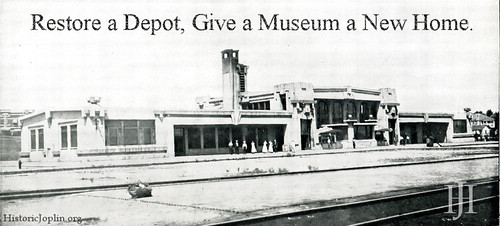
Save the Union Depot!
